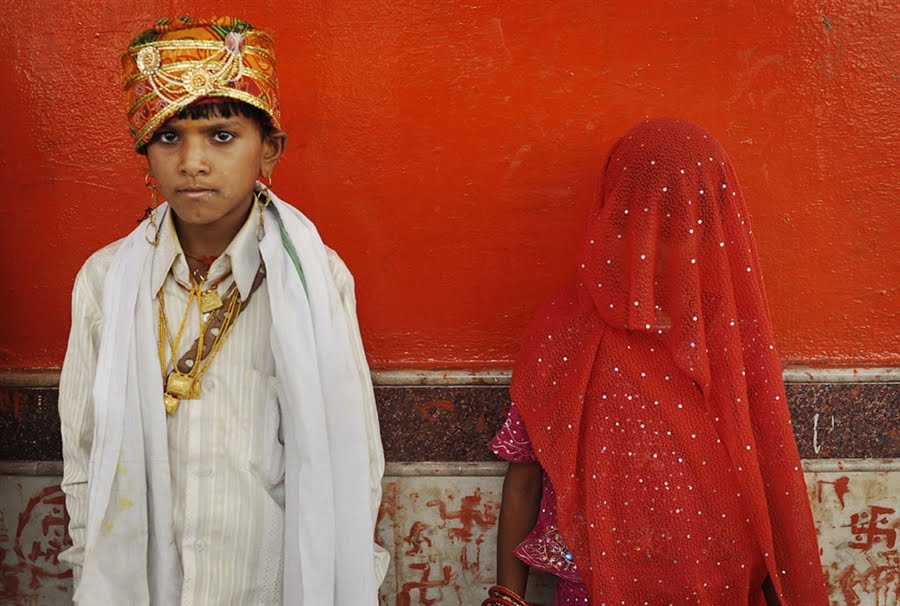By Abhinav Mehrotra
The recent withdrawal by the Rajasthan government of the controversial child marriage clause that made it mandatory to register all marriages, including those of minors, raises questions about the manner in which the social menace of child marriage should be dealt with. This question assumes significance because despite having the Prohibition of Child Marriage Act that was enacted in 2006, child marriages continue to take place. Along with it are the adverse consequences concerning freedom of choice and opportunities and domestic violence. These have adverse health outcomes like high infant, child and maternal mortality rates.
Despite having by statute one of the highest minimum age requirements for legal marriage as compared to other countries such as the US where the minimum age is as low as 13 for girls and 14 for boys, child marriages continue to be widespread throughout India. Furthermore, the ambit of this practice is varied. It ranges from a temporary marriage whereby the man pays to marry a woman for a few hours or a few months; wife inheritance by which a woman can be forced to marry her brother-in-law after her husband has passed away and debt-rape or compensation marriage through which families settle tribal or inter-family disputes by giving a girl in marriage.
Such practices are also prevalent in other countries like Africa where young girls must endure female genital mutilation to establish their cleanliness before marriage and in the Middle East where a woman might be beaten or killed if she fails a virginity test on the day of the marriage.
The root of the issues is the violation of a woman’s bodily integrity and accompanying rights like right to education and right to health ensured through Articles 21 of the Constitution. As a result, she suffers from what is known as Type II trauma—exposure based on traumatic events, adversities and day-to-day stressors.
There are various social factors why child marriages continue—gender norms, overemphasis on a girl’s virginity and chastity and its co-relation to the family’s honour, apprehensions regarding pre-marital sex, marriage transactions (i.e. dowry) and poverty. For centuries, it was believed that a child has no rights and only has the duty to move and act according to the wishes of his\her parents. Children were not perceived as being right holders; instead, they were viewed as the property of parents/guardians.
This led to threats posed to the rights of children, specifically the girl child, and in the larger context, the survival of the democratic structure of India where an individual must have her/his dignity safeguarded as mandated under the Constitution. By safeguarding her dignity, the girl child will have an increased awareness of her rights and privileges and the duties of their parents or guardians towards them.
One of the foremost obstacles when it comes to controlling the rate of child marriage is the practice of dowry. Although there exists the Dowry Prohibition Act of 1961 that makes it a crime to give, take or demand dowry under Section 3 and which is punishable by prison terms and substantial fines as both the givers and takers of dowry are held guilty of the offense, in practice, the Act works as a disincentive for the bride and her family to report dowry cases. This is because they themselves will be held liable under the Act, so they are not only forced by the society but also indirectly by the law to succumb to the demand of dowry.
The reasons why the bride’s family agrees to such demands is the patriarchal belief that by paying a sum of money they assure the well-being of their child. In this context, measures are required to be placed that ensure the parents of the bride will not be harmed and that law enforcement agencies like the police safeguard their interests.
A proposed solution would be a multi-sectoral approach involving various stakeholders, including state governments, civil society and private sectors, as also the religious leaders who influence the beliefs of individuals. Improper implementation of such policies can produce instruments of coercion. Seen in this light, there is a need to shift focus on how the child marriage policy empowers children, rather than control them, and specifically the girl child, so that they have a stake in defining their rights whenever they are threatened.
The need of the hour is taking proactive steps by putting in place an active problem-solving mechanism for these children. These measures can help them reduce the impact on their mental health caused by early marriage and ensure their best interests as defined under Article 3 of the Convention on the Rights of Child and also to stop these marriages from taking place.
One such step was taken by the Rajasthan government when it issued a directive that the date of birth of the bride and the groom be printed on the invitation cards. Guidance can be sought from the Basic Principles and Guidelines on the Right to a Remedy and Reparation for Victims of Gross Violations of International Human Rights Law and Serious Violations of International Humanitarian Law proclaimed by the UN in 2005.
These mandate that the victims of human rights abuses shall be provided full and effective reparations such as restitution, rehabilitation, and guarantee of non-repetition; a forced marriage is one where the force that is used may be either emotional or physical or both and manifests itself in the form of sexual servitude, abuse, gender inequality, threat to livelihood and mental anguish and emotional distress.
—The writer teaches at Jindal Global Law School, OP Jindal Global University, Sonepat, Haryana


